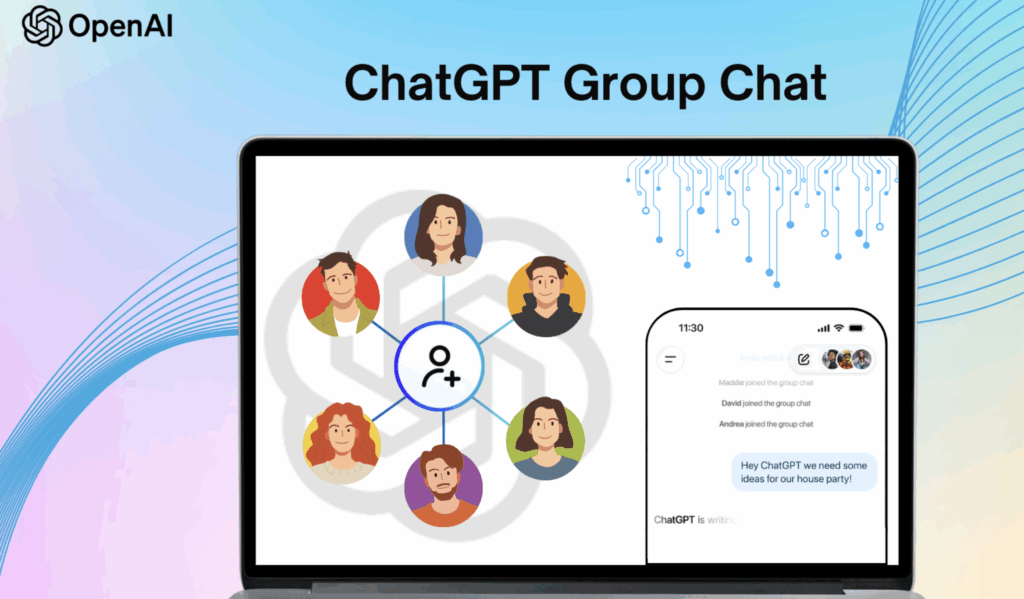OpenAI has officially released the ChatGPT Group Chats feature to users across the globe, after initially limiting it to select regions for testing. This new capability transforms ChatGPT from a personal assistant into a shared collaborative tool, enabling teams, families and friends to work together in a single AI-assisted chat space.

With the global rollout, users can now invite up to 20 participants to join a group conversation where ChatGPT can be activated at any time to contribute ideas, plans or solutions.
What Makes Group Chats Useful?
Much like group conversations on WhatsApp or Slack, ChatGPT’s Group Chats are designed for real-time collaboration. The difference? An AI companion is always available inside the group to offer insights, recommendations and structured assistance.
Some of the most popular use cases include:
- Travel planning: Create itineraries, compare destinations or coordinate bookings
- Work and projects: Brainstorm ideas, structure tasks, refine documents and manage timelines
- Social planning: Organise meet-ups, events, or group activities
- Learning and study groups: Share notes, solve problems or prepare for exams together
- Creative brainstorming: Generate story ideas, business concepts, designs and more
ChatGPT can step in whenever needed—whether it’s summarising a chat, making suggestions or helping resolve confusion in group decision-making.
How to Start a Group Chat
Creating or joining a group is simple:
- Click on the “people” icon at the top-right corner of ChatGPT.
- Generate a group invite link.
- Share it with anyone you want to add to the collaborative space.
All participants must be signed in with an email to access or join a group.
This ensures privacy and prevents unknown users from joining without authentication.
Why This Feature Matters
The Group Chats feature takes ChatGPT from being an individual assistant to a shared digital collaborator, making it a powerful tool for both personal and professional use. Teams can brainstorm in real time, families can plan vacations, and students can collaborate seamlessly—all with AI supporting the conversation.
As more people begin integrating AI into their daily communication, Group Chats represent a major step toward the future of shared, intelligent collaboration.

